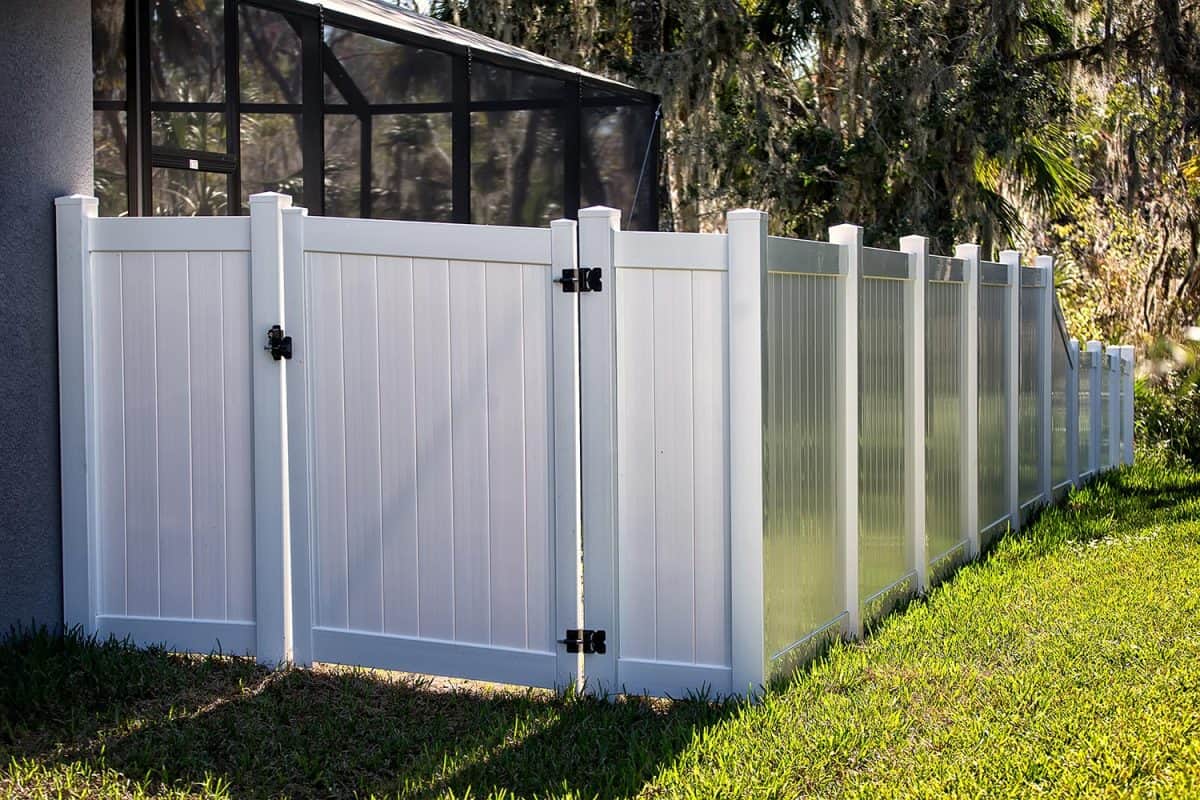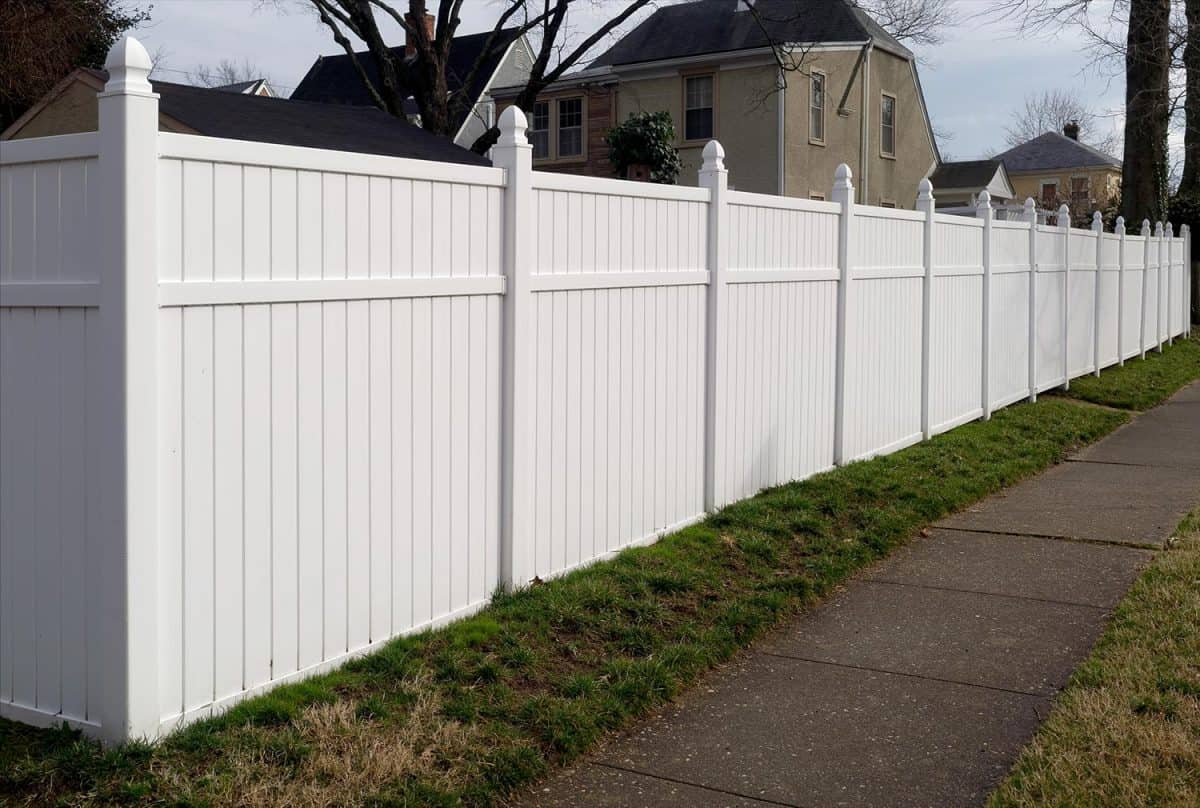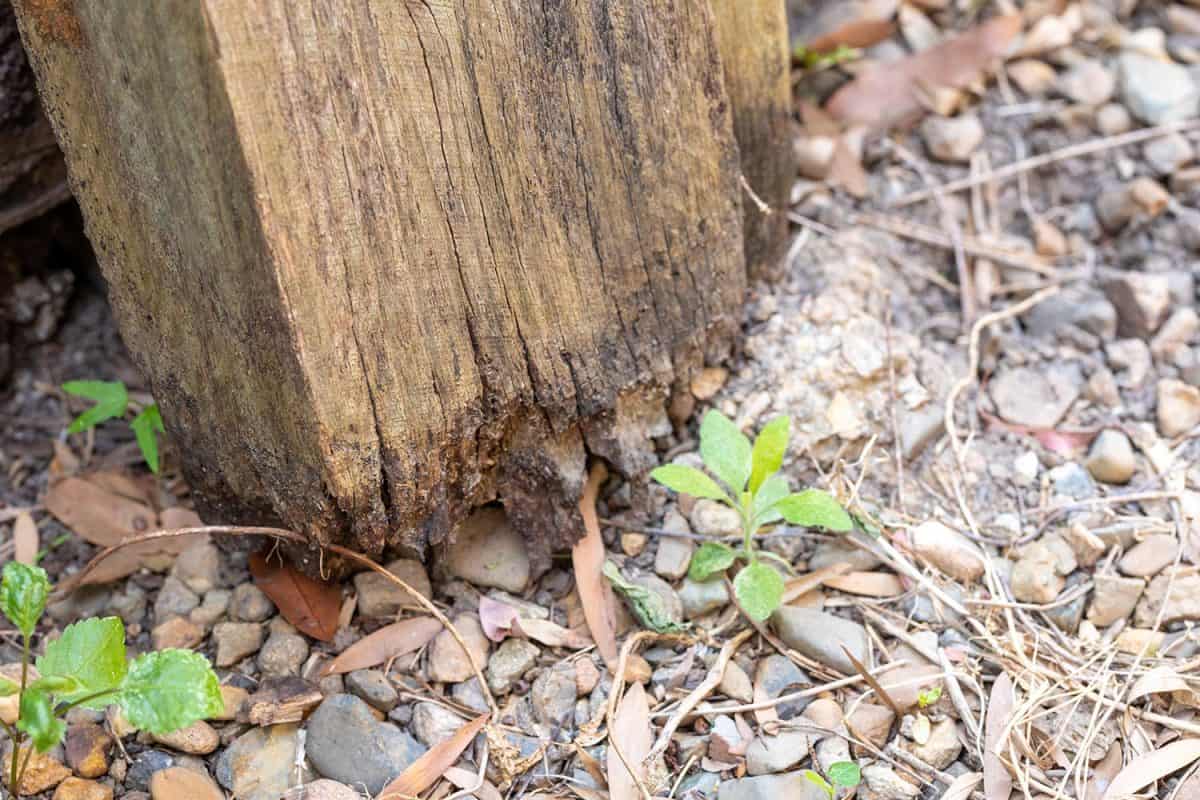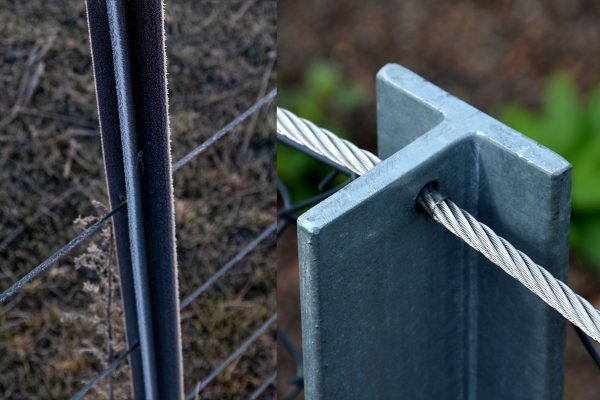When it comes to fence materials, vinyl fences are an excellent long-term choice. They're simple to maintain, easy to repair and replace, and resistant to the elements. But do vinyl fence posts require wood inserts? We researched this topic, and here is what we discovered.
Vinyl fence posts do require reinforcements such as wood inserts. These wood inserts help add more solidity to your post, and hence, your complete fence system if you're installing a new post. However, if adequate drainage is not available, placing a wooden post into concrete within your vinyl post can present issues.
Keep reading as we tackle the pros and cons of wood inserts, how to install them, and some fence post repair tips you can use. In addition, we'll also delve into which parts of your fence need wood inserts and other reinforcement options you can choose from.
![New and contemporary white vinyl fence in a nicely landscaped back yard, Do Vinyl Fence Posts Need Wood Inserts? [Installation & Repair Tips]](https://fencefixation.com/wp-content/uploads/2022/06/Do-Vinyl-Fence-Posts-Need-Wood-Inserts-Installation-Repair-Tips-800x1200.png)
How to Install Wood Inserts?
The most common method for inserting wood into vinyl fence posts is to pound them in place with a hammer. This procedure is quick and simple, but it is also dangerous and can harm the post.
Using a drill and a masonry bit is the quickest and easiest way to install wood inserts into vinyl fence posts.
What Are The Benefits Of Using Wood Inserts On Vinyl Fence Posts?

There are three main benefits of using wood inserts. These are:
- Aesthetic appeal
- Versatility
- Ease of installation
Aesthetic Appeal
Vinyl fencing can be a significant improvement over traditional wood fencing while still looking like a natural wood fence. Wood inserts add an extra layer of protection from the weather and help the fence last longer.
Versatility

They may be put on practically any type of vinyl fence and come in a range of sizes and styles. This enables you to build your design or add a creative aspect to your fence.
Wood inserts can be painted or stained to match your existing fence. This will result in a more natural-looking fence with a more uniform appearance.
Ease of Installation
These wood inserts are easy to install with just a few tools. In addition, you can select from several different types of wood inserts to ensure that your fence has the appropriate aesthetic.
What Are The Drawbacks Of Using Wood Inserts In Vinyl Fence Posts?

When contained within a vinyl fence post, pine, fir, cedar, and even pressure-treated hardwood are all susceptible to water saturation and dry rot. This is the main drawback of using wood inserts.
A vinyl fence will be naturally exposed to significant levels of water from rain, landscape irrigation, and dew accumulation due to its general design and assembly. The water will be received by the horizontal rails that accept the pickets.
Eventually, water will drain into the vinyl post. Needless to say, the posts are likely to receive and accumulate considerable amounts of water regularly.
Fence Posts Repair Tips

Here are seven important things to remember before, during, and after your repair work on your fence posts:
- Examine the damaged post thoroughly.
- Remove the source of the issue.
- A quick-fix solution might suffice.
- Prepare the replacement post and other materials beforehand.
- It is necessary to remove the concrete footing.
- Make sure that the new fence post has the right footing depth.
- Make final touches.
Examine the damaged posts thoroughly

Examine the fence post, the damage, and any underlying factors that are impacting the fence post before determining whether to repair or replace it.
Determine whether the damage is acute, such as that caused by a neighbor's backing into the fence, or chronic, such as wood rot, which will worsen if the problem isn't addressed.
Remove the source of the issue
If a fence post shows signs of damage, the underlying cause must be identified and stopped, or at the very least relieved, or the damage will continue even if the fence is restored.
Highly acidic concrete footings, moisture traps that gather rainwater at the base of the fence post, and insect infestations such as carpenter ants, termites, and powder post beetles are all common causes that can contribute to continued damage.
A quick-fix solution might suffice
A quick-fix fence repair product may be the best alternative in cases of acute damage or even minor chronic damage if the underlying problem has been treated and eased.
These solutions are designed to repair fence post fractures and breaks without having to replace the entire post.
Prepare the replacement posts and other materials beforehand
Before you remove the fence post, make sure you have a replacement post and all of the materials needed to install it. This includes items such as brackets, screws, gravel, concrete mix, a bucket or wheelbarrow, a shovel, and a level, and potentially a posthole digger.
It is important to remove the concrete footing
You must remove the concrete footing as well when replacing a fence post. This is because the new fence post must be able to take up the same amount of space as the old post to effectively support the existing fence without placing an unnecessary strain on the structure.
Make sure that the new fence post has the right footing depth
In most cases, 1/3 to 1/2 of the fence post should be able to rest comfortably in the hole, with an extra 6 inches of depth filled with gravel to aid drainage.
But if you erect the fence post in an area exposed to freezing conditions, you must set it deep enough to sit below the frost line.
The frost line for most localities is roughly 3 feet down, so a minimum depth of about 4 feet would be suitable, but keep in mind that some sites may have a frost line as deep as 8 feet.
Make final touches
To complete the replacement, fill the hole with gravel and tamp it down to make a firmly packed, strong base, then lower the fence post into the hole, making sure it is centered in the hole, plumb, and level. Scoop the thoroughly mixed concrete into the hole and around the post.
Allow three days for the concrete to be set before replacing the brackets and screws holding the fence components to the post.
What Posts Need Additional Reinforcements?
Corner, gate, and end posts are usually required to be reinforced by manufacturers. Experts also recommend reinforcing inline posts for vinyl privacy fences over 5 feet tall.
Problem posts, posts that lack rigidity for whatever reason, posts in high-wind areas, and posts in a long straight length of a fence may require extra care and reinforcement.
What Are Other Vinyl Fence Posts Reinforcement Options?
Aside from wood inserts, there are other post reinforcement options you can choose from. These are:
- Metal sleeves
- Concrete and rebar
- Thicker fence material
Metal Sleeves
The vinyl is put into a steel or aluminum sleeve. This is the quickest and most convenient technique of reinforcement.
These sleeves are so easy to install, lightweight, and have various designs available depending on the placement and connectivity of the posts. There are also full-length and half-length variants available for inline posts.
Concrete and Rebar
Manufacturers may recommend a full or partial fill of concrete within the post with a couple of lengths of rebar as an alternative to the metal sleeve.
This method is more time-consuming than using a metal sleeve. However, if all of the other posts that need strengthening are installed at the same time, it may be possible to save money on the entire installation.
Thicker Fence Material
Some manufacturers create thicker posts that don't need reinforcement. Others have made the composite material for the post with additives that improve strength without increasing volume.
This gives it more stability and reduces the need for additional reinforcement that other products may have.
Final Words
Having wood inserts add stability and reinforcement to your vinyl fence posts. They are also simple to install with the help of just a few tools. However, due to its nature, wood may rot over time due to its exposure to moisture and UV rays.
If you're contemplating whether to let your vinyl fence touch the ground or not, you can read this article to learn more: Should A Vinyl Fence Touch The Ground?
Before you go, you can check these related articles on fence posts from this site:
Should Fence Posts Be Below Frost Line? [How To Prevent Frost Heave Posts]



